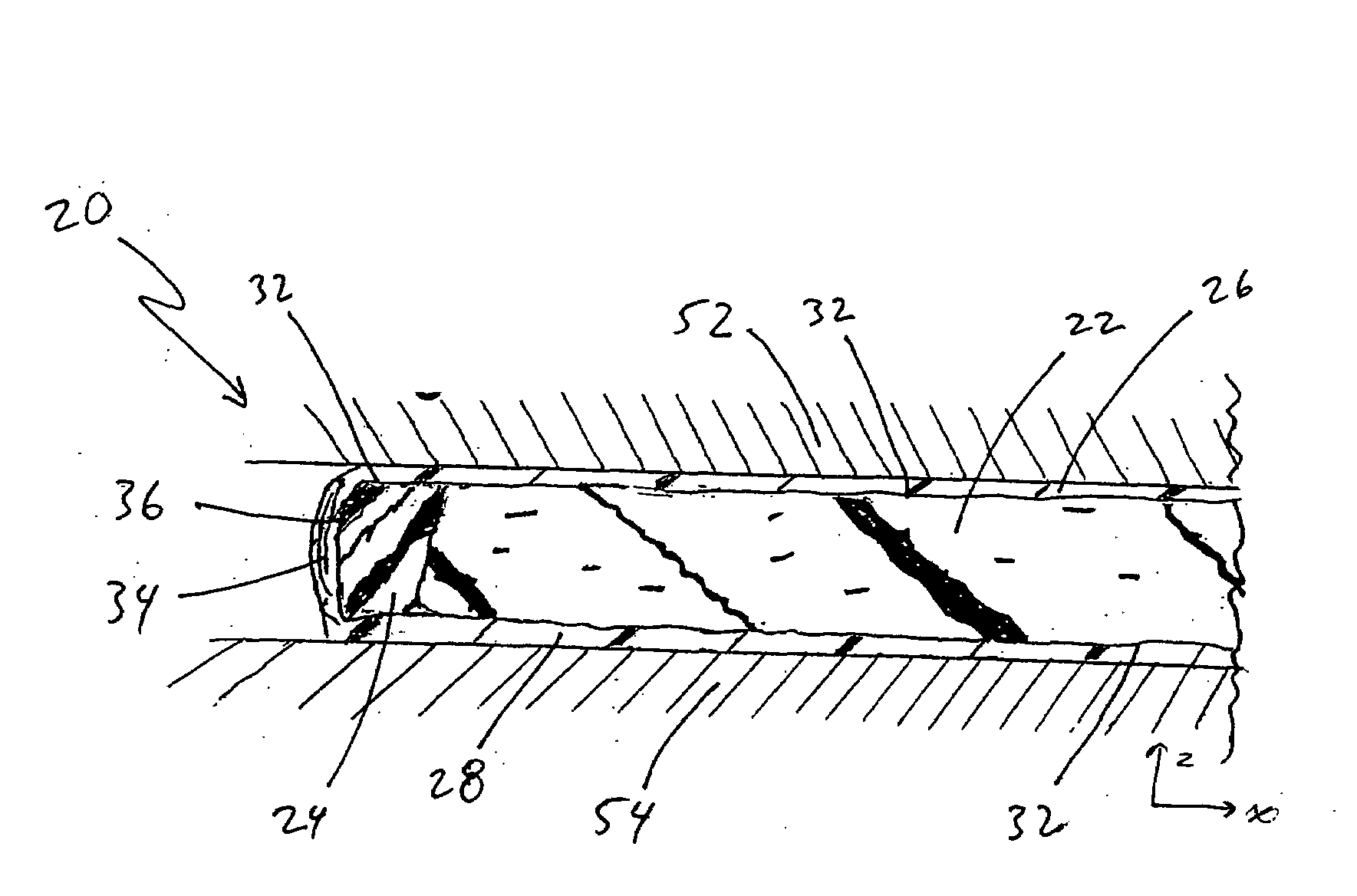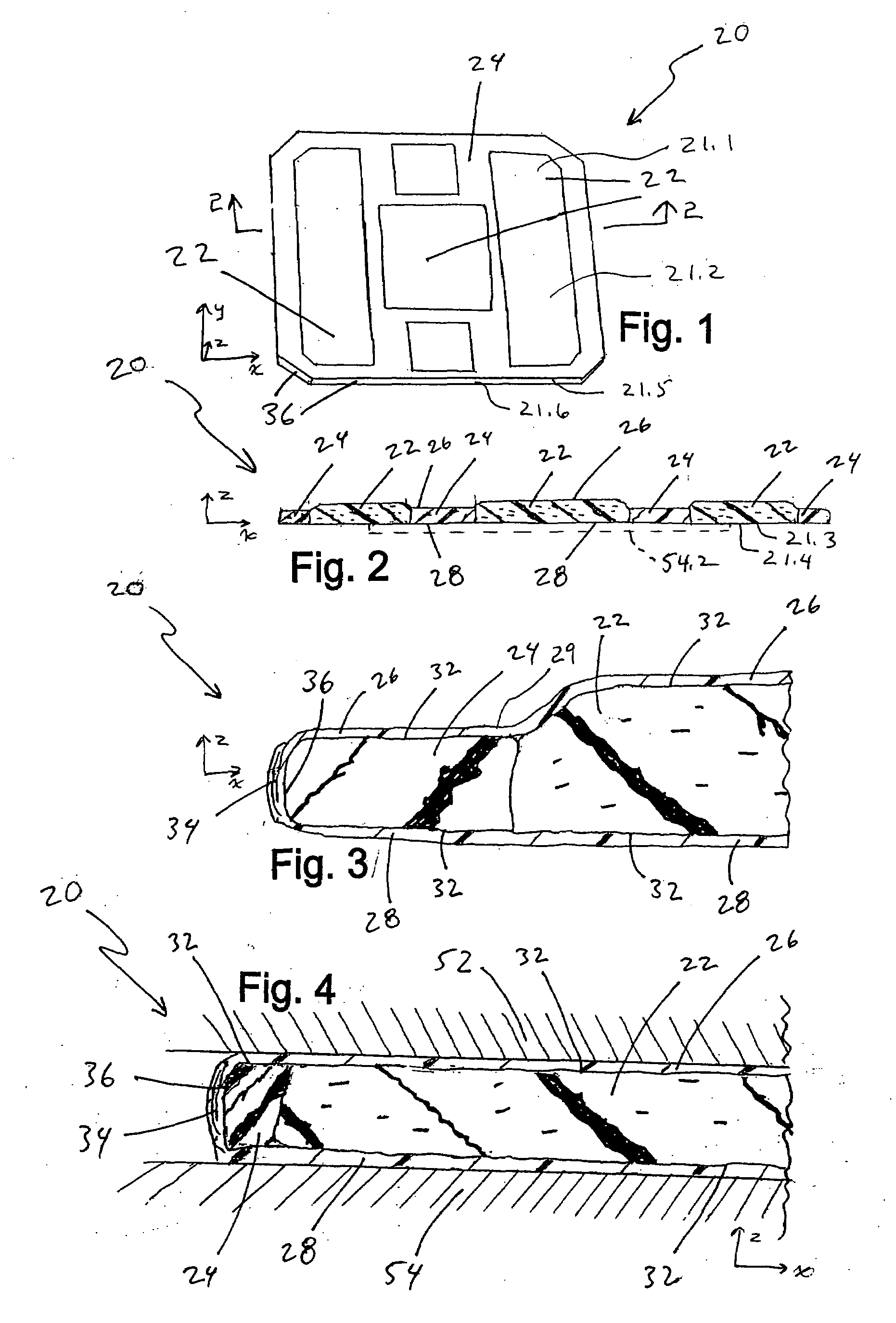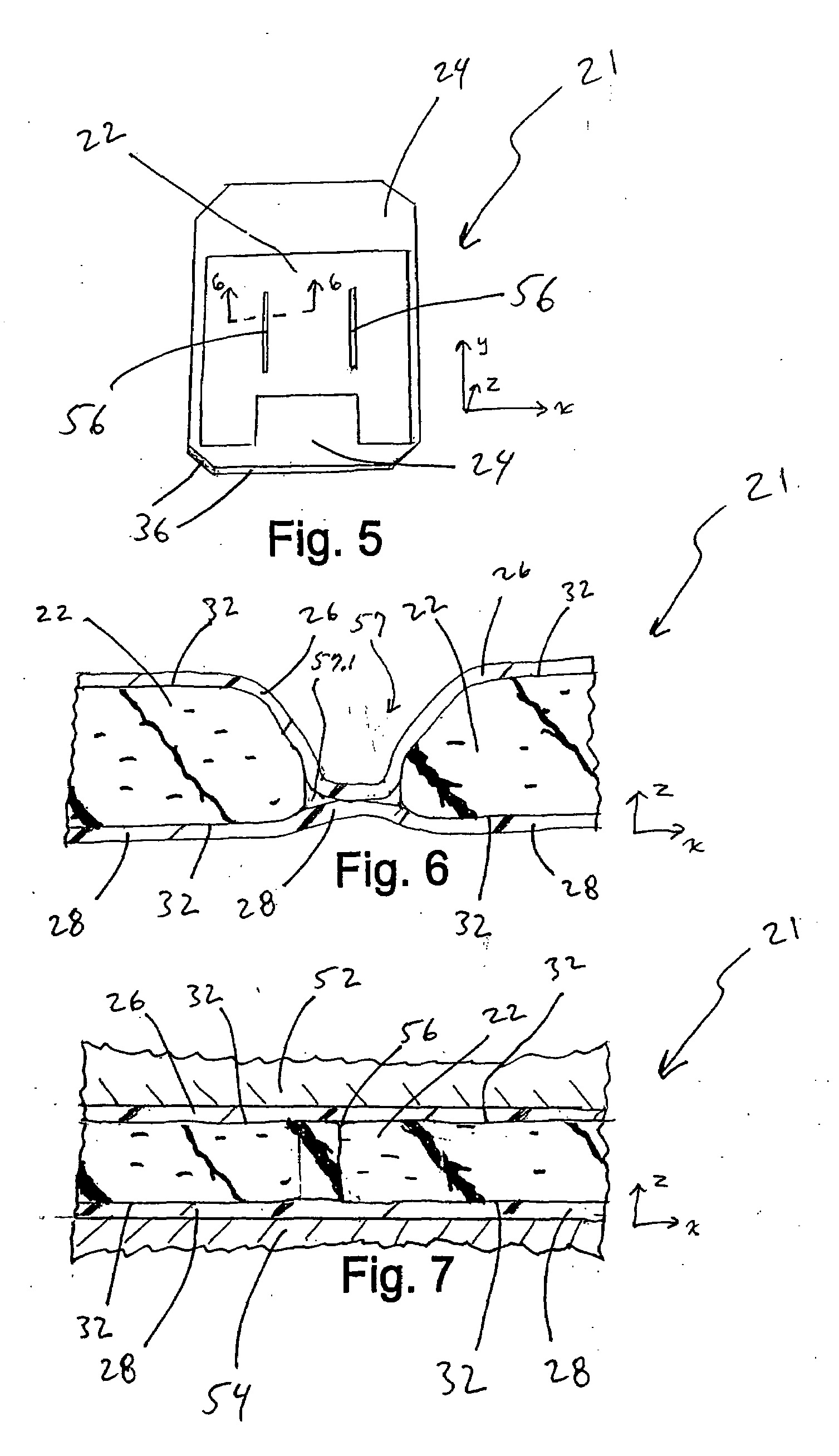Sealed thermal interface component
- Summary
- Abstract
- Description
- Claims
- Application Information
AI Technical Summary
Benefits of technology
Problems solved by technology
Method used
Image
Examples
Embodiment Construction
[0028]The present invention includes a heat-sealed thermal interface component for facilitating heat transfer between a heat source and a heat-sinking component. Referring to FIGS. 1, 2, 5, and 6 different embodiments of the sealed thermal interface component 20, 21 are illustrated. The components generally have a top side 21.1 with a top surface 21.2, a bottom side 21.3 with a bottom surface 21.4, and a side 21.5 with a side surface 21.6. In preferred embodiments the component is a sheet configuration with a maximum thickness of about 0.03 inches to about 0.50 inches (in the z direction of the x-y-z coordinate system) and surface area (in the x and y plane) of about 2 square inches to about 36 square inches. More preferably, the component has a thickness of 0.06 to 0.16 inches. The component may have a thickness that varies slightly due to different thicknesses of the base components and compression that occurs during manufacture, specifically the partial evacuation. When used here...
PUM
| Property | Measurement | Unit |
|---|---|---|
| Power | aaaaa | aaaaa |
| Temperature | aaaaa | aaaaa |
| Thickness | aaaaa | aaaaa |
Abstract
Description
Claims
Application Information
 Login to View More
Login to View More - R&D
- Intellectual Property
- Life Sciences
- Materials
- Tech Scout
- Unparalleled Data Quality
- Higher Quality Content
- 60% Fewer Hallucinations
Browse by: Latest US Patents, China's latest patents, Technical Efficacy Thesaurus, Application Domain, Technology Topic, Popular Technical Reports.
© 2025 PatSnap. All rights reserved.Legal|Privacy policy|Modern Slavery Act Transparency Statement|Sitemap|About US| Contact US: help@patsnap.com



